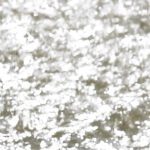Week nine was all about task four. If you haven’t read through the task please do so now.
Some things to note about task four –
- Your portfolio of blog posts should document the development of your project and refer to other media, readings and materials which help you think about what you’re doing.
- Your final project does not need to be one media piece it can be a collection of smaller media pieces, an interactive work or something else. The important thing is that you can justify why your work is in the particular form it is.
- You will be marked on the creative and technical quality of your project in relation to content (what the work shows) and form (how you’ve assembled your media together).
- The form of your project can evolve iteratively in response to the media you collect (just make sure you leave yourself enough time to think through this)
- Make sure you give yourself enough time at the end (after you’ve completed your task) to write a comprehensive reflection on the task and your progression through the studio.
After going through task four we discussed some different creative possibilities for the form of your task. We looked and listened to a series of forms including: video art, sound collage, new media art, installation art and mobile media works. Our discussion revolved around considering what natural and unnatural might mean, how our works might create sensory experiences as opposed to meaning and how showing your work as a mobile media piece might create a more intimate experience with noticing media.
You can find the slides and examples of these different creative possibilities on these slides, as well as a timeline for the rest of the semester.
Thursday’s workshop was all about planning your task four through the following exercise (which everyone is required to do):
- BIGGEST THING – What do I want to know through doing task four?
- BIG THINGS – What do I need to do to know what I want to know?
- SMALL THINGS – How can I break these things I need to do into doable tasks?
- Locate the risks in these doable tasks by marking them in someway and then prioritise these in your head (what don’t I know how to do already – these tasks will probably take the most time)
- In your list of “small things” number these in the order you need to do them
- From your numbered list of “small things” create a timeline which clearly indicates what you need to do each week leading up to submission on the 20th of October
- Write a list or brainstorm of all the things which matter to your project (think of this as hash-tagging your project)
- Use a combination of some of these terms to do some initial research: what readings/artworks will youlook at over the following weeks to help you think about the making of your project?
- As this is a large scale project you will need to incorporate research into your portfolio of blog posts, where you might want to set yourself a set amount of readings and/or media pieces to look at over the next four weeks. Add this to your timeline.
- A guideline for talking about this research might be:
- What was the research about?
- What did you find interesting?
- How might you use ideas in this research to think about your project?
For an example of what to do see Mia’s post on planning.
Everyone made themselves accountable for next week by telling me what they will bring to next Thursday’s workshop to show and get feedback on. For those that didn’t attend please add what you will bring as a comment.
Next week reminders:
- Wednesday’s class will be a practical workshop in using a piece of software that allows you to make interactive media work. Make sure you bring your laptop along with some pieces of media to work with.
- I will talk about the Tsing reading next week to get you thinking about the last aim of the studio which is “to create media artefacts which come closer to performing the complexity of the changing world around us”
